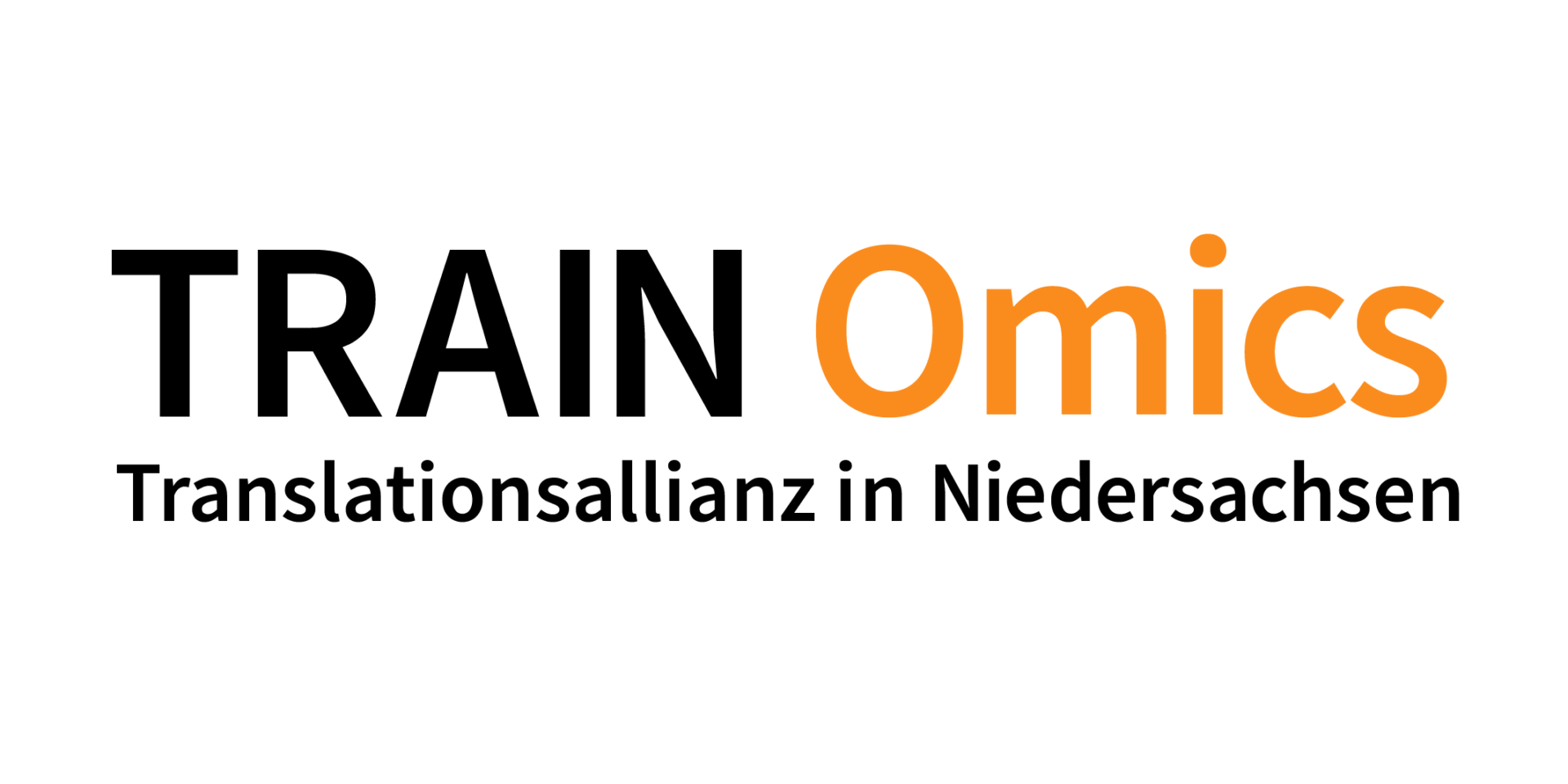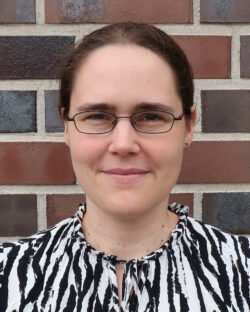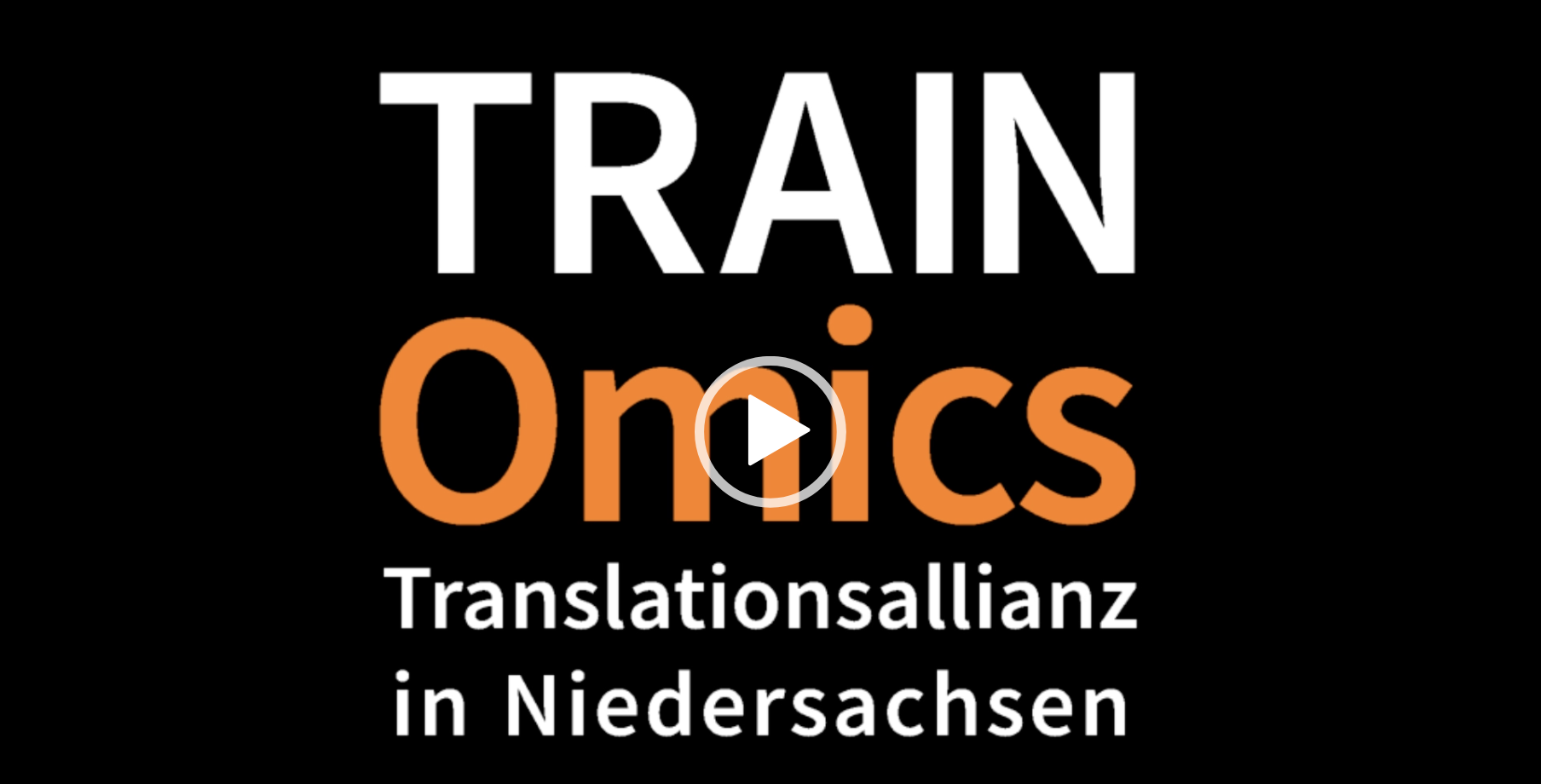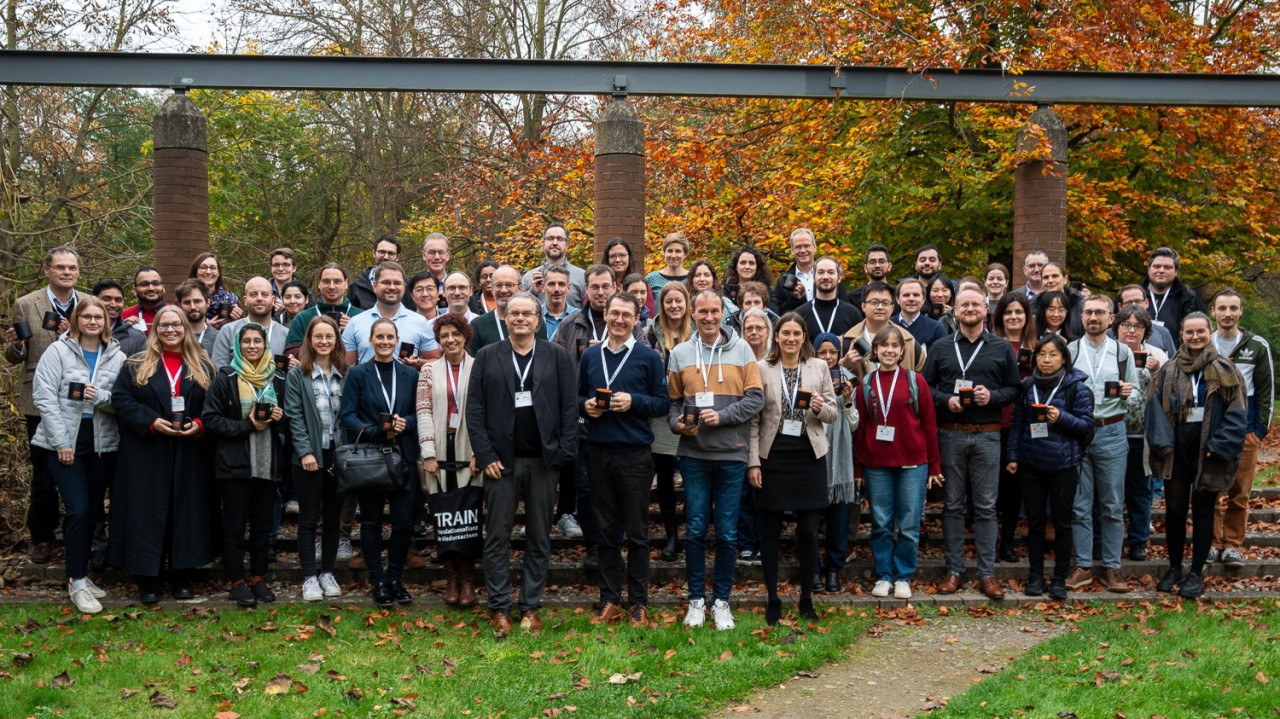TRAIN Omics
The network for omics technologies in
health research in Lower Saxony
TRAIN Omics connects research institutions in Lower Saxony that are deal with so-called ‘omics technologies’. Universities, non-university institutes and companies work together in this network.
OUR MISSION
TRAIN Omics brings together medical professionals, life scientists, data experts and companies. This fosters new ideas and strategies for utilising omics technologies in health research. We connect infrastructure for samples, analyses and data, allowing researchers to access the knowledge they need for their projects. This helps to transfer findings into medical practice more quickly. In light of the rapid development of these technologies, such collaboration is crucial for success in health research in Lower Saxony, Germany and beyond. The network provides scientists with access to modern omics technologies for data analysis and management.
What are omics technologies?
Omics technologies examine the entire spectrum of molecules in living systems. This enables us to better understand biological processes. These include methods such as genomics, transcriptomics, proteomics and metabolomics. They provide important information about how genes, gene products (e.g. RNA), proteins and metabolites work together. These technologies are becoming increasingly important in health research because they help us understand diseases at the molecular level and find new ways to prevent, diagnose and treat them – especially in the field of personalised medicine.
STRATEGY & OBJECTIVES
Team

Dr. Sara Haag
TRAIN Consultant for Omics Technologies and Data Sciences
“TRAIN Omics offers a unique exchange platform for life scientist, data scientists and medical professionals, which helps to ensure that the latest methods and technologies, as well as the knowledge gained from them, reach patient care more quickly.”
Dr. rer. nat. Sara Haag is a TRAIN consultant responsible for the strategic development of the Omics Technologies and Data Sciences division, project management and the coordination of networking events. Previously, she was a project manager at the Hannover Unified Biobank (Hannover Medical School), where she was involved in cross-location projects in the field of structural harmonisation and quality assurance. From 2019 to 2021, she was involved in the development of a database for genome-based microbial diagnostics as part of an industry collaboration at Twincore (Hanover). Prior to that, she worked for several years in the field of RNA biology in Kassel and Göttingen. In addition to her expertise in omics technologies, data processing and project management, she has extensive experience in scientific teaching and public relations.
Technology and data infrastructure
Background
Omics technologies are divided into four major areas: genomics, transcriptomics, proteomics and metabolomics. Since genomes and transcriptomes are analysed using high-throughput sequencing (next-generation sequencing), while proteome and metabolome analyses are often performed using mass spectrometry (MS), each of the omics technologies presents its own challenges in terms of the laboratory and equipment required, as well as bioinformatic data analysis and data management. Networking between the various experts and research infrastructures is therefore crucial in order to effectively master the different challenges posed by omics technologies and enable the integration of data from the various fields. Only through close cooperation and the exchange of know-how can the complex data from genomics, transcriptomics, proteomics and metabolomics be optimally utilised and prepared for research and clinical application.
Omics technology platforms in the TRAIN network
Within the TRAIN region, there are a number of nationally and internationally competitive omics technology platforms that analyse samples from various scientific fields in the region as well as within clinical diagnostics and are networked across cities and institutions within the TRAIN Omics framework. In addition, there are several working groups that contribute specific expertise in sample collection and preparation for some highly specialised research areas, thereby contributing to the excellence of Lower Saxony as a research region.
Bioinformatics and molecular data sciences
Bioinformatics and (molecular) data sciences are central disciplines for the evaluation of complex omics data from fields such as genomics, transcriptomics, proteomics and metabolomics. These data require not only specialised expertise and advanced analysis tools, but also a deep understanding of the respective research area. In addition, the increasing integration of artificial intelligence (AI) methods is helping to exploit the full potential of this data and gain new insights. One particularly promising approach is the integration of multi-omics data. This involves linking data from different omics fields to enable a holistic analysis of molecular processes. This synergy promotes a deeper understanding of disease mechanisms and will lead to innovative diagnostic tools and targeted therapies. The TRAIN network brings together expert groups from various fields of bioinformatics and data science who contribute their expertise to joint projects and scientific collaborations to support the complex analysis and interpretation of omics data.
Data management
However, the successful use of omics technologies requires not only excellent expertise, but above all a well-networked and powerful infrastructure. In particular, the exchange and integration of large, complex data sets across cross-location research networks represents a key challenge. Initiatives such as the TRAIN network help to ensure the efficient use of omics data by linking bioinformatics and data science working groups. Such cooperative approaches are essential for advancing data integration on a large scale and promoting transdisciplinary exchange between research institutions. Only through the close integration of expertise and infrastructures can the full potential of omics technologies for research and clinical application be realised.










